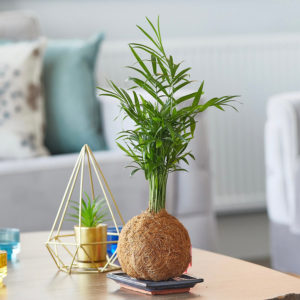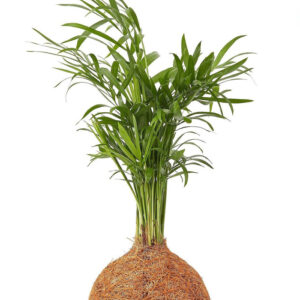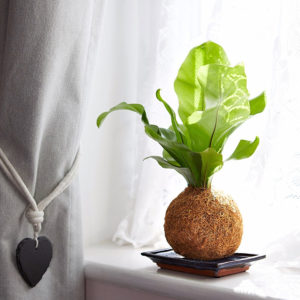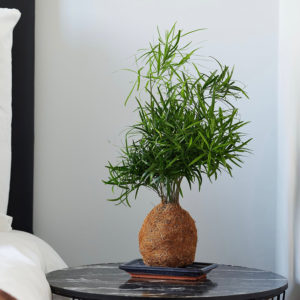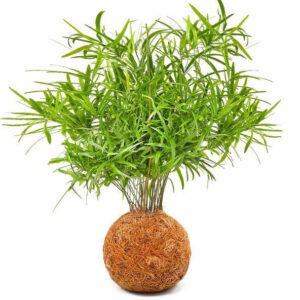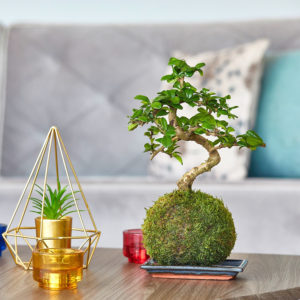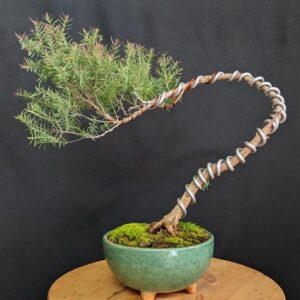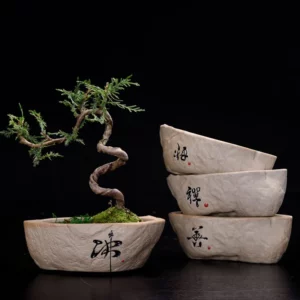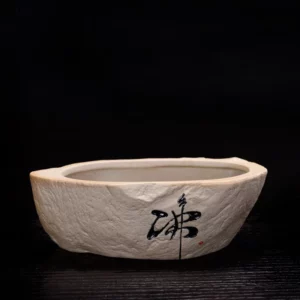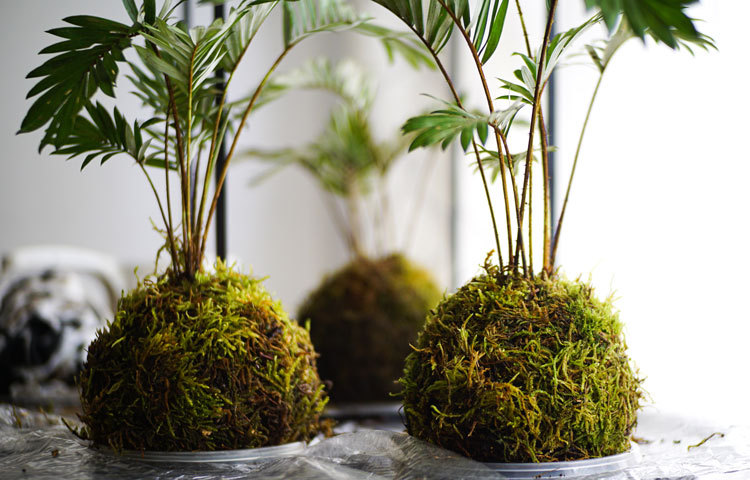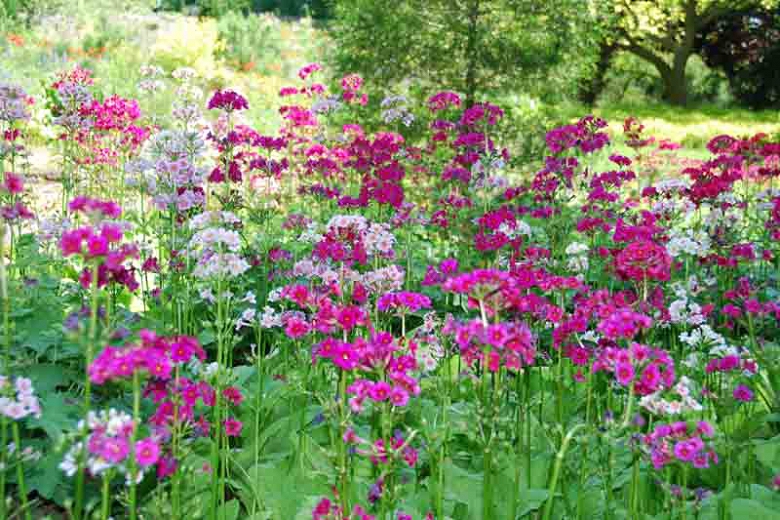In 1981, a 250-year-old juniper bonsai tree reportedly sold for a mind-blowing $2,000,000 US dollars, but a picture remains to be found. More recently, in 2011, a white pine bonsai tree (over 800-years-old) was sold for a whopping $1.3 million dollars at a bonsai exhibition in Takamatsu, Japan – and officially stands as the most expensive bonsai tree today.

I know what you’re thinking: how can miniature trees be so expensive?
In this article, we show you the world’s best bonsai plants.
- What is bonsai?
- The spirituality of bonsai
- What’s better: indoor or outdoor trees?
- What kind of soil should I use?
- Where’s the best place to get bonsai?
- Top 20 Best Bonsai
-
- Wisteria Bonsai
- Ginkgo Bonsai
- Japanese Winterberry Bonsai
- Fukien Tea Tree
- Juniper Bonsai
- Chinese Elm Bonsai
- Japanese Maple Bonsai
- Money Tree Bonsai
- Japanese Yew Bonsai
- Bonsai Oak Tree
- Pine Bonsai
- Pomegranate Bonsai
- Zelkova Bonsai
- Baobab Bonsai
- Jade Bonsai
- Serissa Bonsai
- Bougainvillea Bonsai
- Ficus Bonsai
- Azalea (Rhododendron) Bonsai
- Cherry Blossom Bonsai
What is bonsai?
Dating back to 700 AD China and first appearing during 12th century Japan, bonsai (盆栽), literally meaning ‘planted in a container’, are trees planted in a container or tray. Smaller versions of regular trees that reflect nature in miniature.
Today, bonsai is extremely popular. Both indoor bonsai trees and outdoor bonsai trees provide an attractive aesthetic and require proper care from their owners.
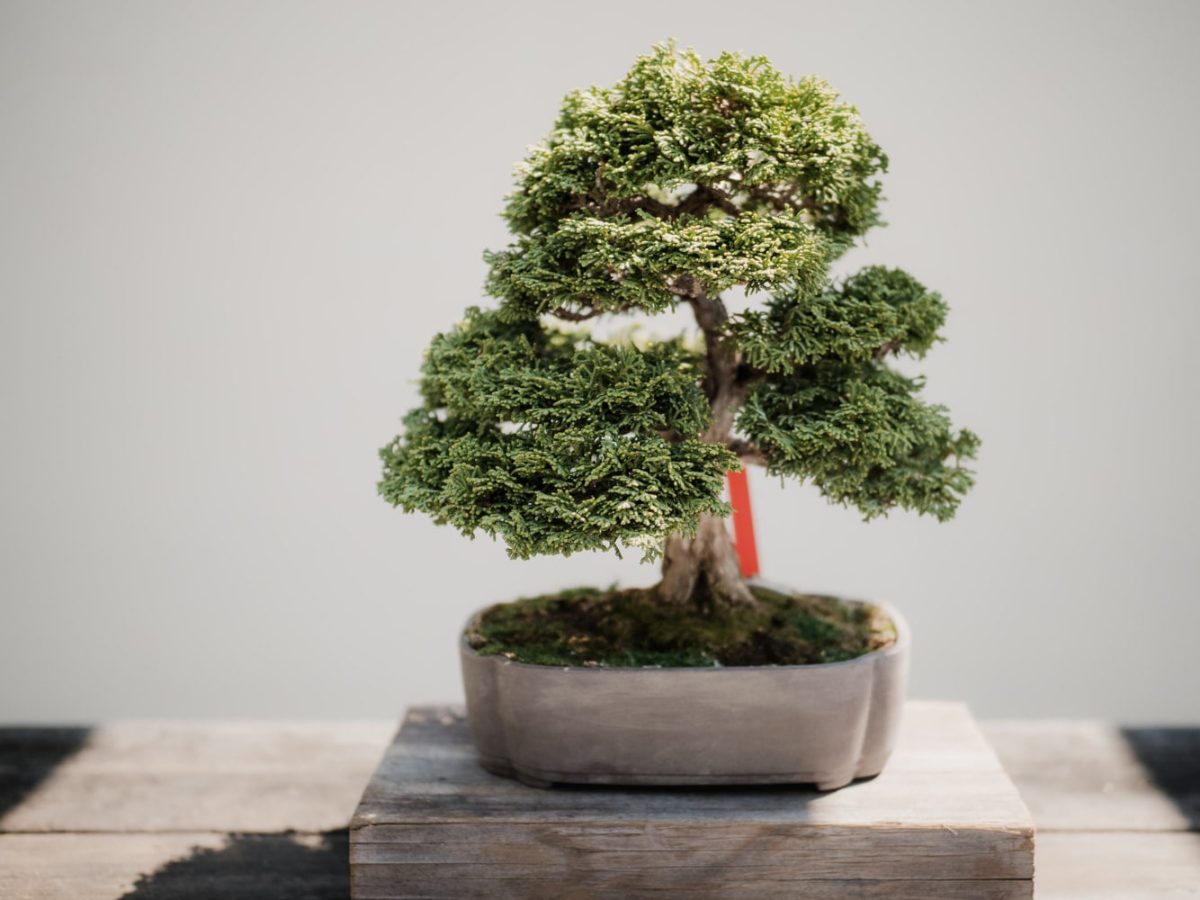
Nevertheless, calling bonsai a ‘hobby’ may cause a look of disapproval from a dedicated bonsai enthusiast. For the Japanese especially, bonsai is art. These trees require detailed, purposeful, and mindful attention.
The spirituality of bonsai
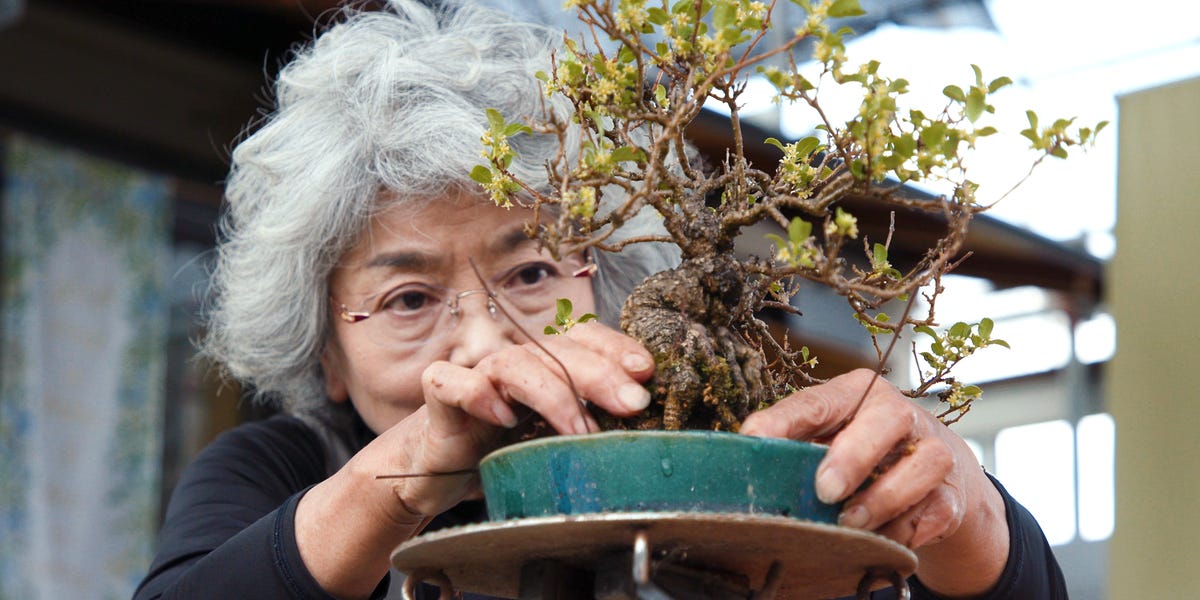
Bonsai holds links with Zen Buddhism, as it’s believed planting and nurturing bonsai trees lets you connect with both nature and yourself.
According to bonsai master Chiako Yamamoto:
‘You can’t grow plants if you don’t have any sense of ritual or spirituality’
To think most bonsai trees are kept indoors is missing the mark (only tropical and subtropical plants are kept inside). Most bonsai thrive outside – exposed to the seasons. Take into account the bonsai tree, your home (do you have a balcony or garden? A sun-facing window?), and your local climate when choosing between indoor and outdoor bonsai trees. For some inspiration, check out our guide to perfect Japanese plants for your garden.
What kind of soil should I use?
Created from the explosions of Mt. Fuji on Honshu island in 1707, akadama soil is used to grow the best bonsai plants for two main reasons: it’s free-draining (meaning it drains moisture without the owner having to do anything) and the soil goes darker the moister it gets – letting the owner know when to water it.
Where’s the best place to get bonsai?
The practice of yamadori (digging up the best bonsai plants or bonsai seeds from a bonsai forest) is now illegal – so those with any intentions to replicate Mr Miyagi’s yamadori scene in the Karate Kid will sadly be disappointed.
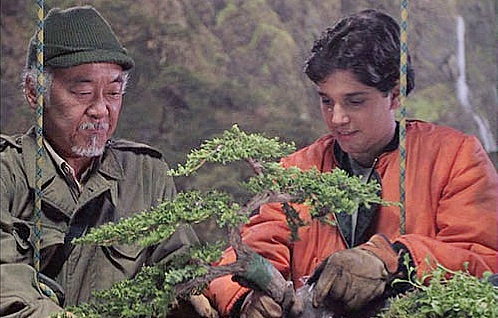
Today, bonsai seeds, artificial bonsai trees, and the best bonsai plants can be bought online and in bonsai shops. To guide you, Greenwoods Bonsai Studio has been selling bonsai trees and accessories for over 50 years; as has Herons Bonsai (the UK’s number 1 bonsai centre) – which hosts beautiful bonsai exhibitions.
Intrigued? Here are the world’s best bonsai plants…
Wisteria Bonsai

The Wisteria bonsai is one for the romantics. Why? Its clusters of bluish-purple flowers are simply jaw-dropping, often seen drooping over pergolas or facades in gardens. The wisteria comes in white, pink, and dark purple – and remarkably, its seed pots aggressively ping the seeds out when they’re ripe, (be careful though, as these are poisonous). In summer, place the wisteria in full sun, and in a frost-free greenhouse or garden shed in winter. Water until the roots are moist in autumn and winter, and in spring/summer: place the bonsai pot in a shallow bowl, filled up with water each watering session.
Ginkgo Bonsai
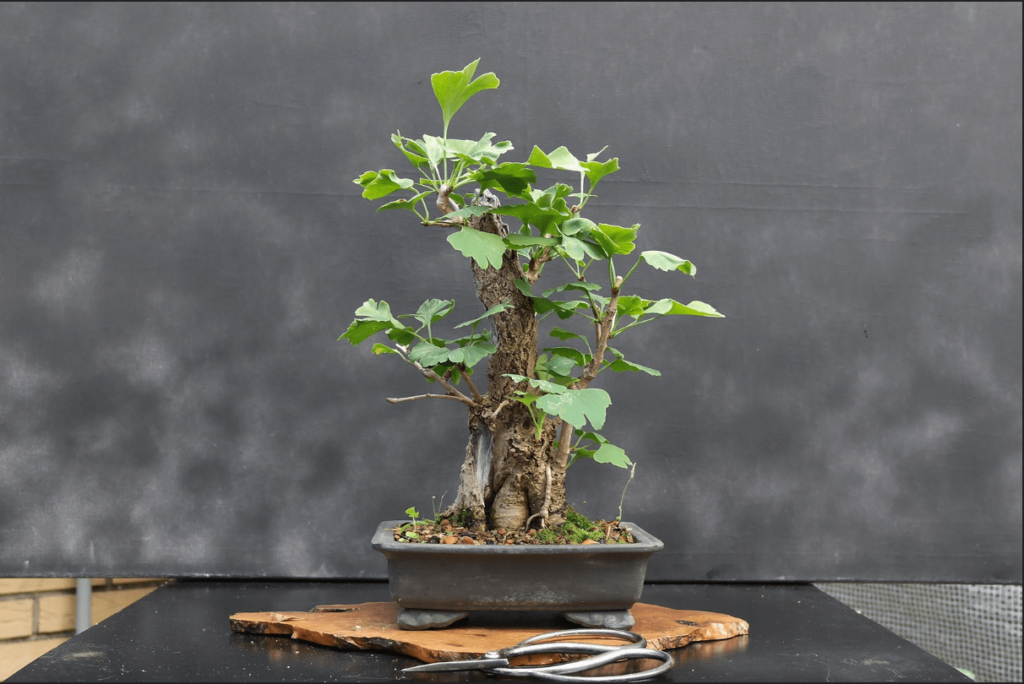
The ginkgo bonsai gets even more gorgeous as it broadens out over time with its fan-shaped leaves. Originating in China, the ginkgo is a living fossil dating back 270 million years and some ginkgo trees in China are 130ft tall and 4,000 years old! They are very robust (can be grown in many places and handle polluted atmospheres). Fun fact: six famous ginkgo trees survived the atomic bomb in Hiroshima in 1945, placed just 2km away from the explosion’s core. Remember to keep your ginkgo bonsai outside! The leaves of the ginkgo turn bright yellow in autumn before they fall.
Japanese Winterberry Bonsai
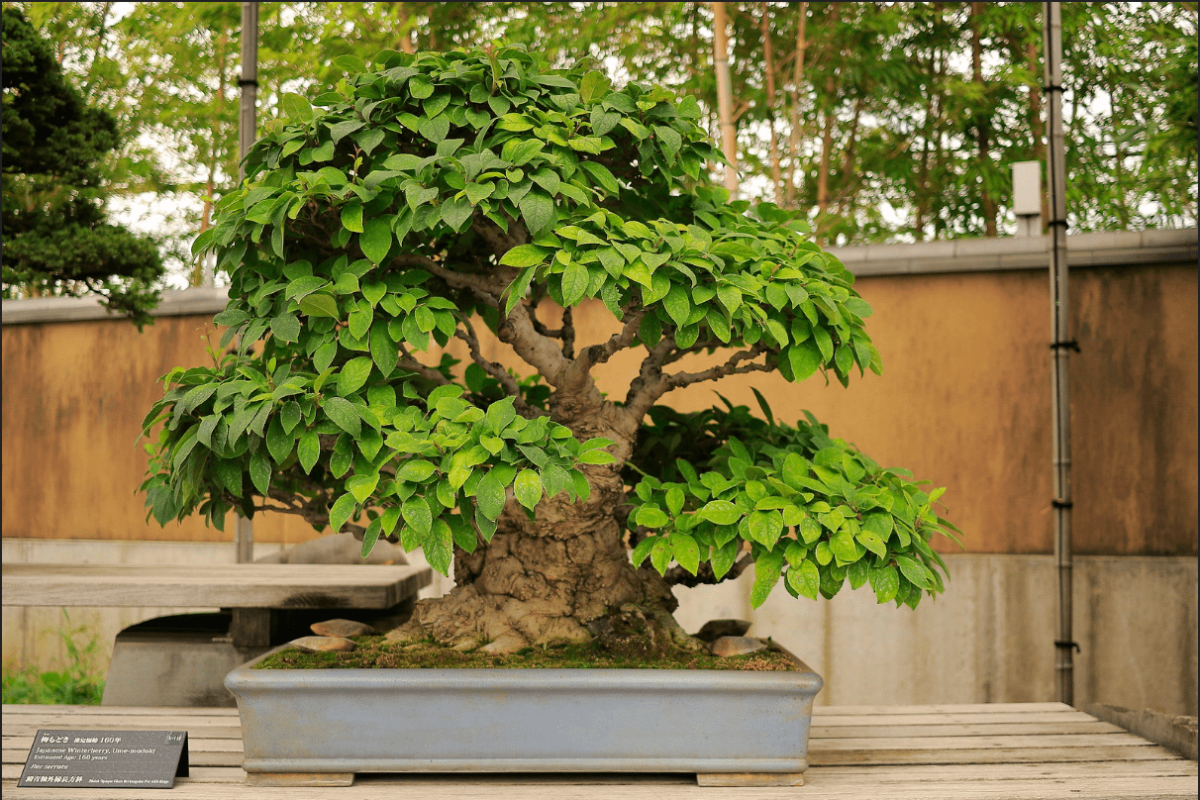
Dark green leaves. Pink flowers. What’s not to love? The Japanese Winterberry Bonsai works brilliantly as a shohin (very small) sized bonsai. With a male and female pollinating at the same time, expect beautiful fruits like red berries to spring up. This is an outdoor plant, so treat it as such. Water it thoroughly as soon as the soil surface gets dry. And enjoy one of the best bonsai plants around.
Fukien Tea Tree
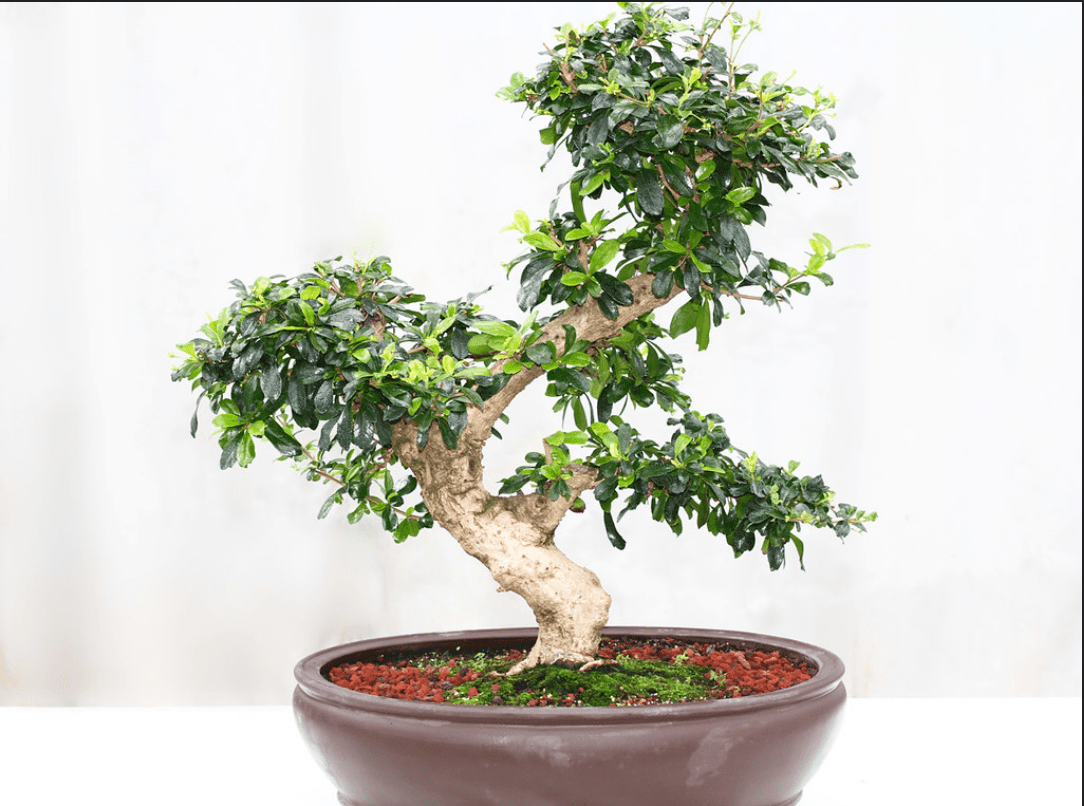
The Fukien Tea Bonsai (or Carmona) offers a terrific indoor bonsai option. Its leaves are famous in the bonsai world: small, dark-green with white dots on the top and hairs on the bottom (cool… I know). Expect to see small berries and white flowers growing! Provide it with a good source of natural light and keep it in temperatures 20°C or more – and you’re in for a real treat.
Juniper Bonsai
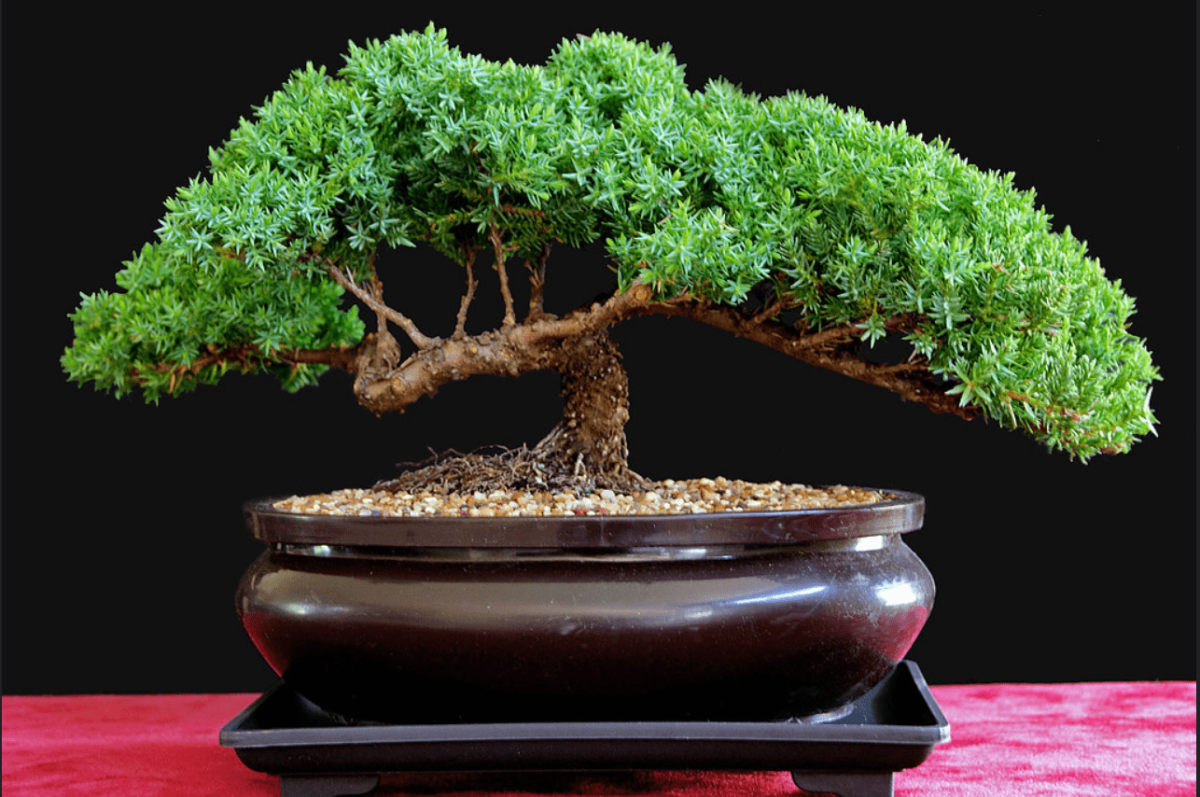
A very popular option, the juniper bonsai is one of the very best bonsai plants. It’s associated with protection, purification, and power – and reportedly cleanses those around it. These trees can be bought in stores and are best kept outdoors facing plenty of sunlight. Be careful not to over-water (its roots don’t like wetness) and remember to prune and fertilise your juniper. Wiring (twisting a plant’s branches into shapes) is a popular practice with juniper bonsai.
Chinese Elm Bonsai
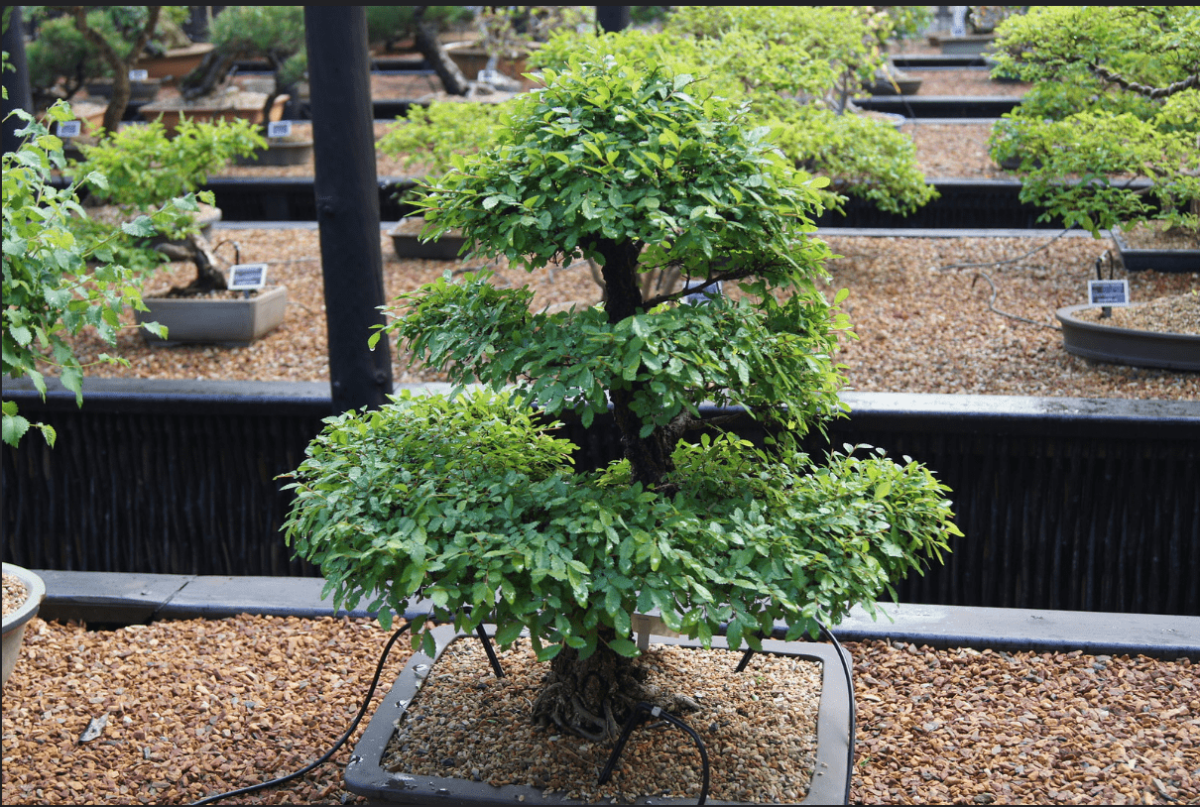
The most popular bonsai elm tree, the Chinese elm stands out for its astonishing double-toothed leaves. Its branches stretch out elegantly and make that it one of the most aesthetically pleasing bonsai trees. It thrives either outside in the full sun and/or partial shade, or indoors in a cool room (recommended during the winter months). With watering, you must wait until the topsoil is dry and then water the entire root mass thoroughly. For a dense network of branches, you’ll need to trim your elm regularly as it’s a fast grower. Note that its branches are elm ideal for shaping with standard wiring and guy wire techniques. Undoubtedly one of the best bonsai plants for novices.
Japanese Maple Bonsai
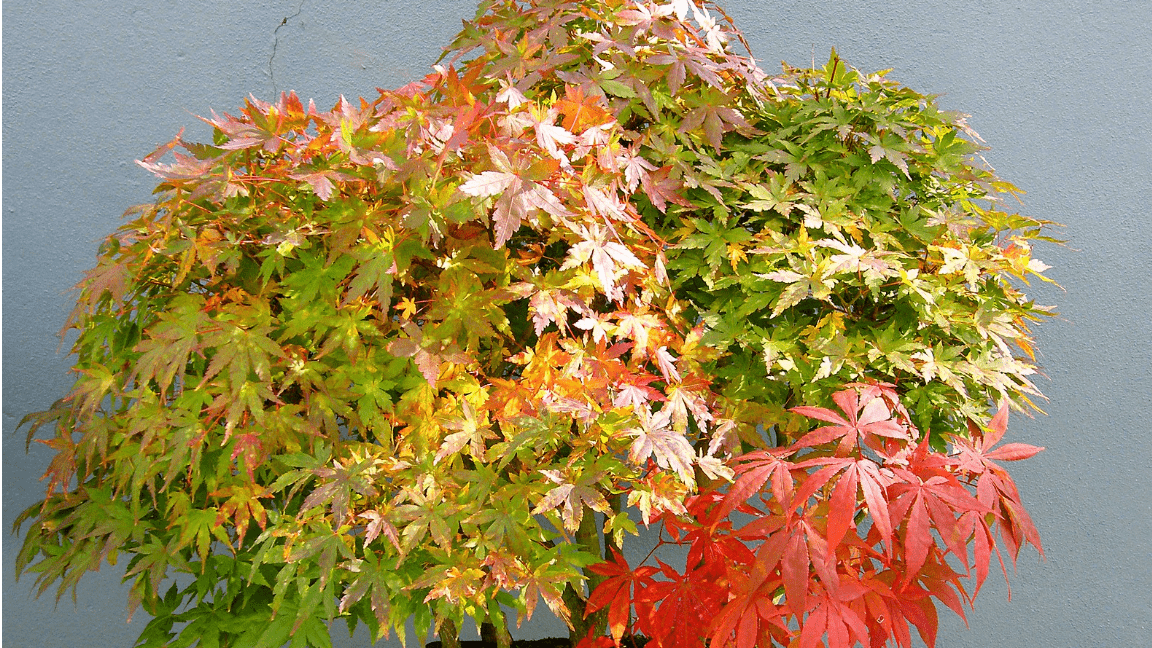
Japanese maples come in many shapes, sizes and colours – often glowing in green, yellow, orange, and red autumn colours. Their palm-shaped leaves are stunning and should be cared for with good attention. They thrive outdoors (in a sunny and airy location), as long as it’s below 30°C, and enjoy being watered daily. Trimming shoots and twigs can be done year-round and note that you must repot your Japanese maple every two years.
Money Tree Bonsai
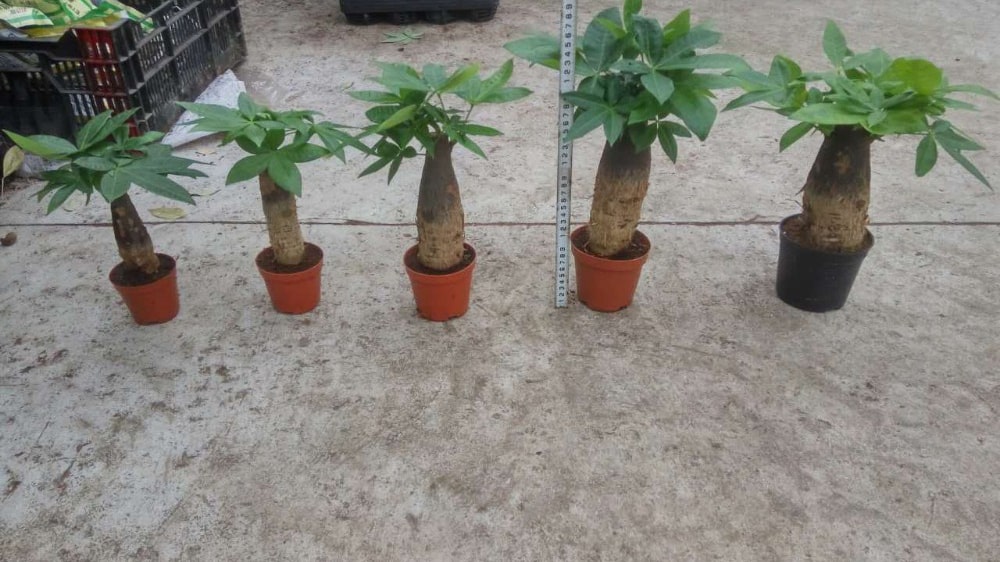
The money tree bonsai (or Pachira Aquatica) is linked with good luck and fortune – making it a popular indoor bonsai option. Its swollen and twisted trunk is a stand-out feature, as are its hand-shaped compound leaves. Adults produce greenish-yellow or cream-colored flowers with seeds that can be roasted and eaten. Place indoors facing strong sunlight (preferably facing south) and make sure the soil gets try before watering thoroughly.
Japanese Yew Bonsai
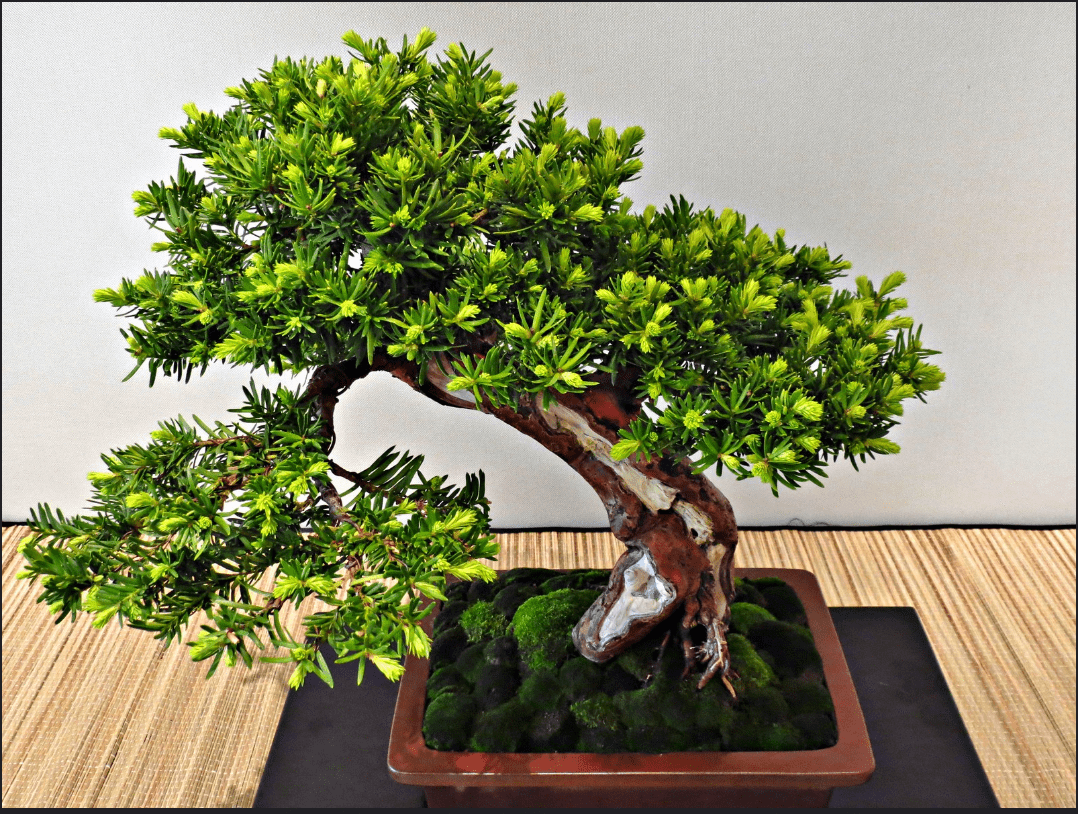
Let dark green needle-shaped foliage add some colour to your garden. When Japanese yews are heavily pruned, they can even bud from parts where no foliage was left, which is a very helpful feature for bonsai styling. They can become up to a thousand years old and are very sturdy: in the Middle Ages, yew wood was used for longbows. Place in sunlight for optimal growing, water as soon as soil gets dry, and apply solid organic fertilizer every four weeks. Note that it can be pruned back into old wood and bud easily.
Bonsai Oak Tree
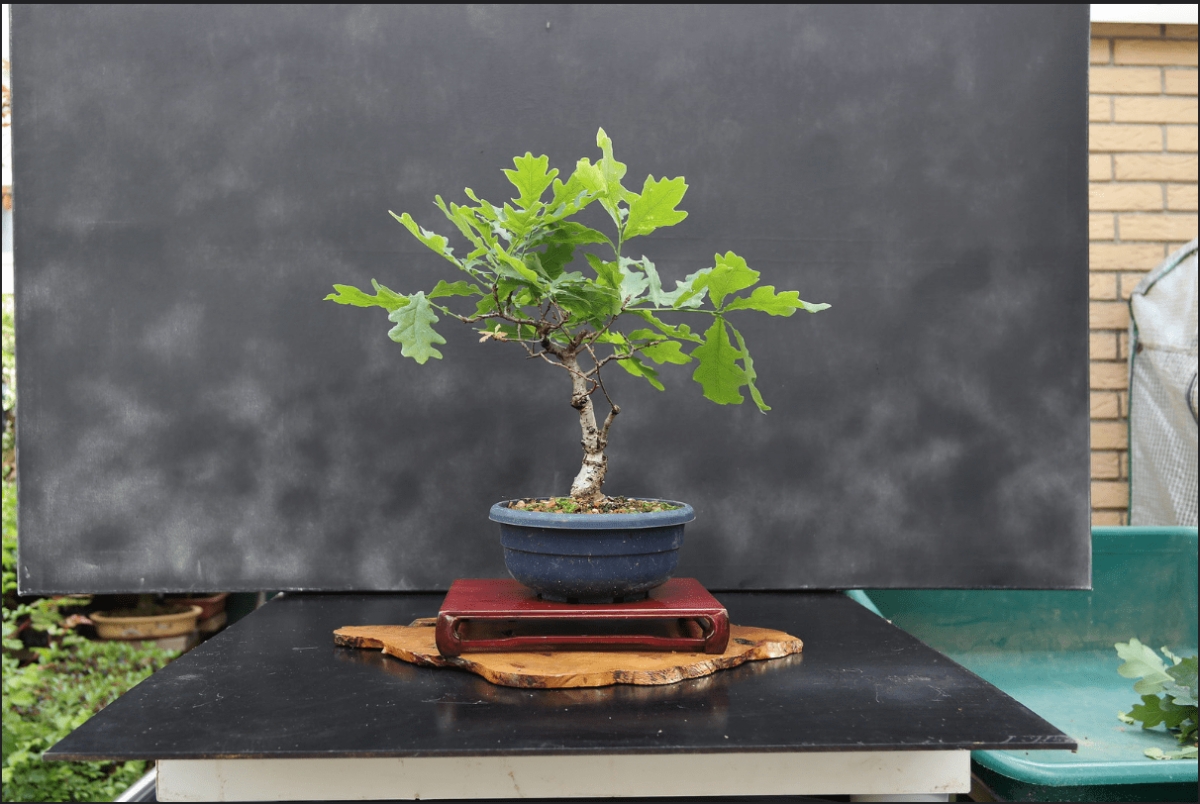
Oak trees work well as bonsai and are easy to care for – making them one of the best bonsai plants. They still produce acorns in miniature form and their 6-inch long dark green leaves turn yellow and brown in autumn – so you can blissfully watch the seasons change. Place yours in an airy place from spring to autumn for maximum growth. Keep away from frost in winter. Prune in early spring (before the buds open). Repot every two years. Enjoy!
Pine Bonsai

The pine bonsai is arguably the most loved of bonsai trees. Its popularity, in part, comes from its versatility, as it’s able to grow in many different shapes and sizes – it can be shaped in almost every bonsai style. Pines either have one or two flushes of growth per year. Pine bonsai trees are Japan’s archetypal type of bonsai – regarded as one of the best bonsai trees. They have cared for them for generations.
Pomegranate Bonsai
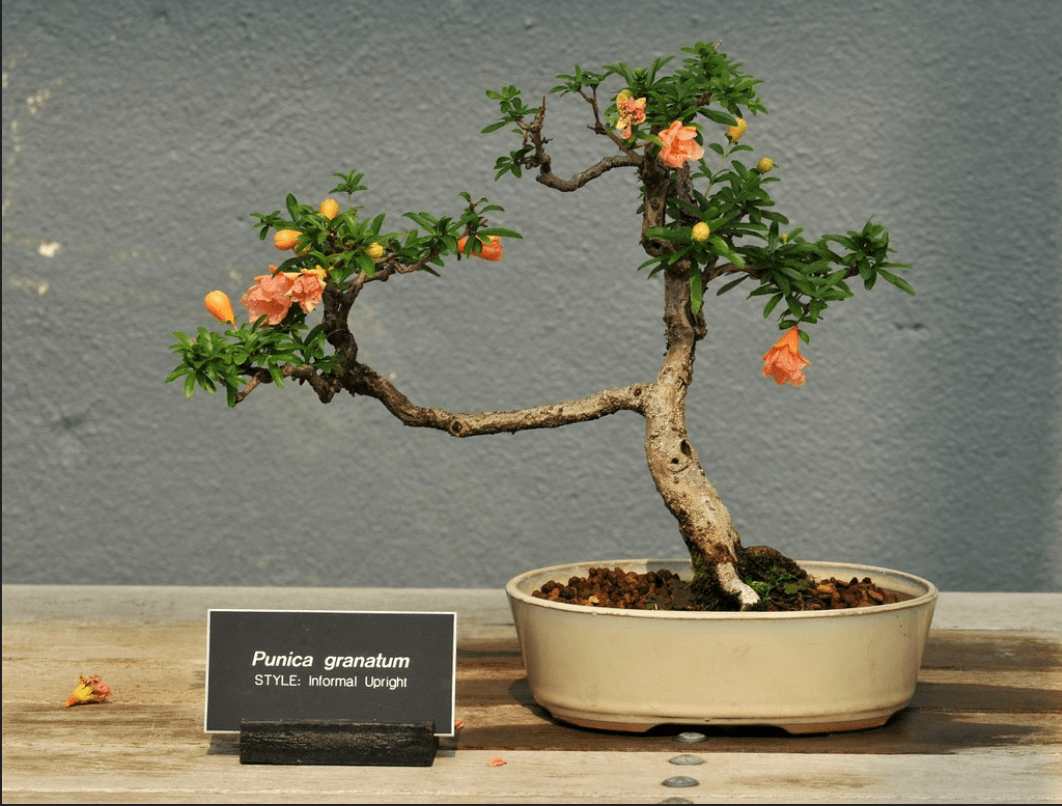
An explosion of red, the Pomegranate Bonsai is a sight for the romantics: bright trumpet-shaped red flowers spring up and throw light onto all around it. Its mouth-watering red pomegranates are its major selling point because this fruit is extremely versatile: used in salads and drinks, or even medicinal purposes. Protect from very hot temperatures and frost, and remember to water its flowers strongly when they open during summer.
Zelkova Bonsai

The zelkova bonsai (or Japanese Elm) is known for its ‘Hokidachi’ bonsai shape: an upside-down brush shape with twigs and branches dividing and fanning out to the side. Its leaves are dark green in the summer, before changing to yellow, orange, red, and purple in autumn. It’s very easy to care for: keep in sunlight, water regularly, and allow new shoots to grow until they have produced 4 to 6 leaves, then cut them back to 2 leaves. Without a doubt, one of the best bonsai plants you can buy.
Baobab Bonsai
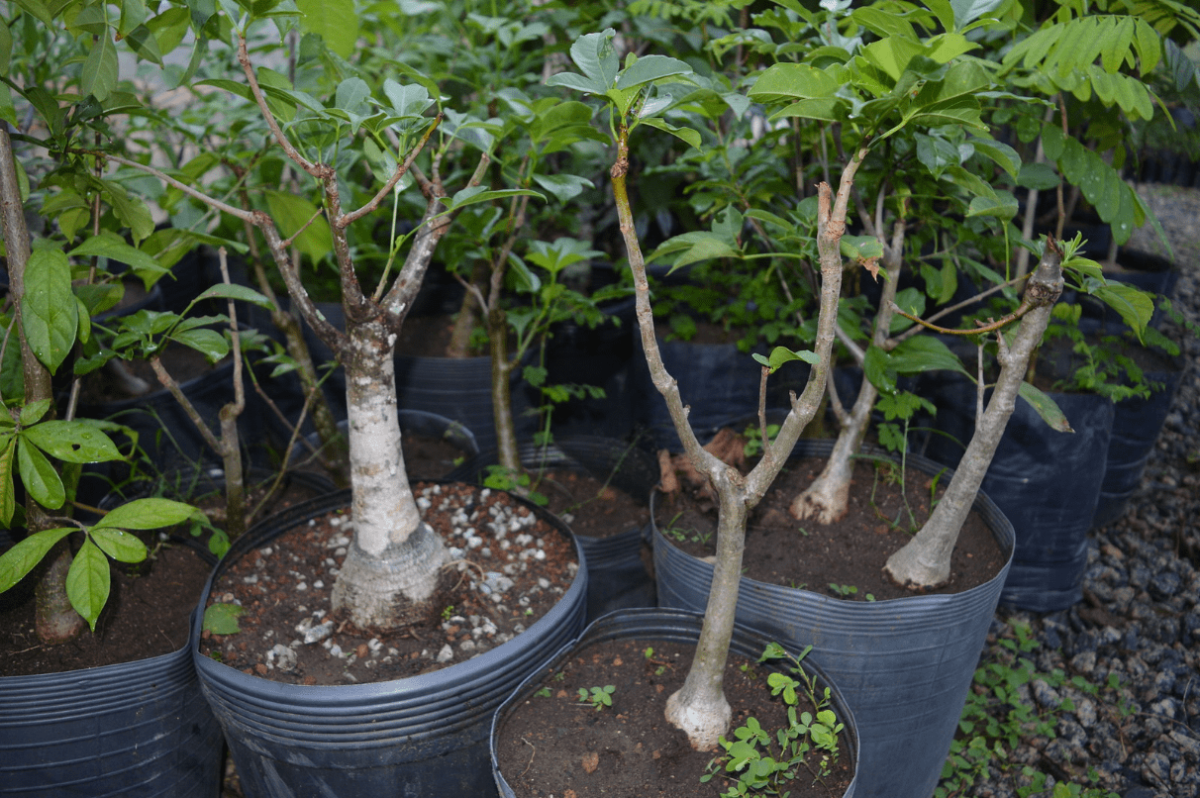
Native to the dry Sahara, the baobab can grow to 65ft tall in normal size. Remarkably, it can work as a bonsai tree: but note that they grow very slowly – so be patient. Expect large hand-shaped leaves, white flowers in older trees, and a thick trunk that can store water. Its baobab fruit is edible (and delicious). Just remember to move inside if below 12°C!
Jade Bonsai
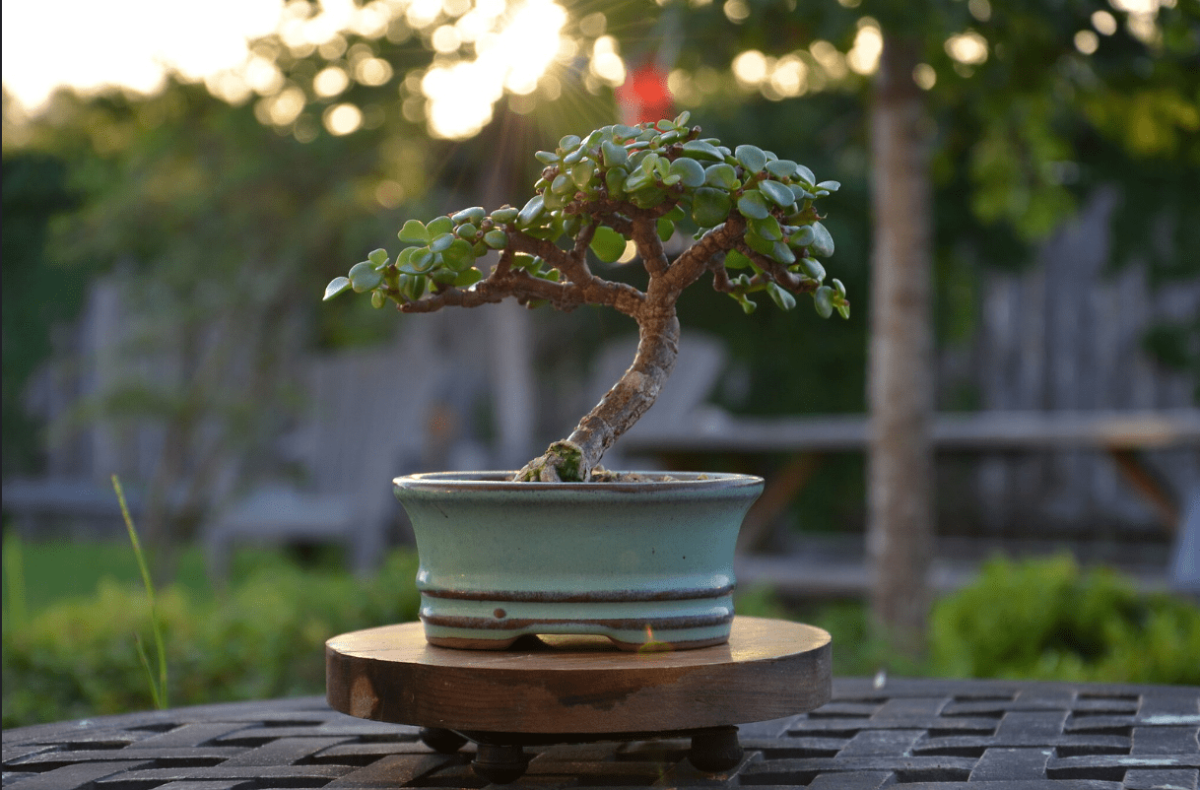
Jade bonsai stand out for their green oval-shaped leaves and elegant aesthetic. Its bark turns from green to red-brown with age. White flowers appear in autumn if it’s been a dry season. It’s best kept indoors although can be kept outdoors in high temperatures and full sun. They can have large amounts of water inside their leaves, so let your jade dry out between watering and water sparsely. A beautiful and affordable option.
Serissa Bonsai
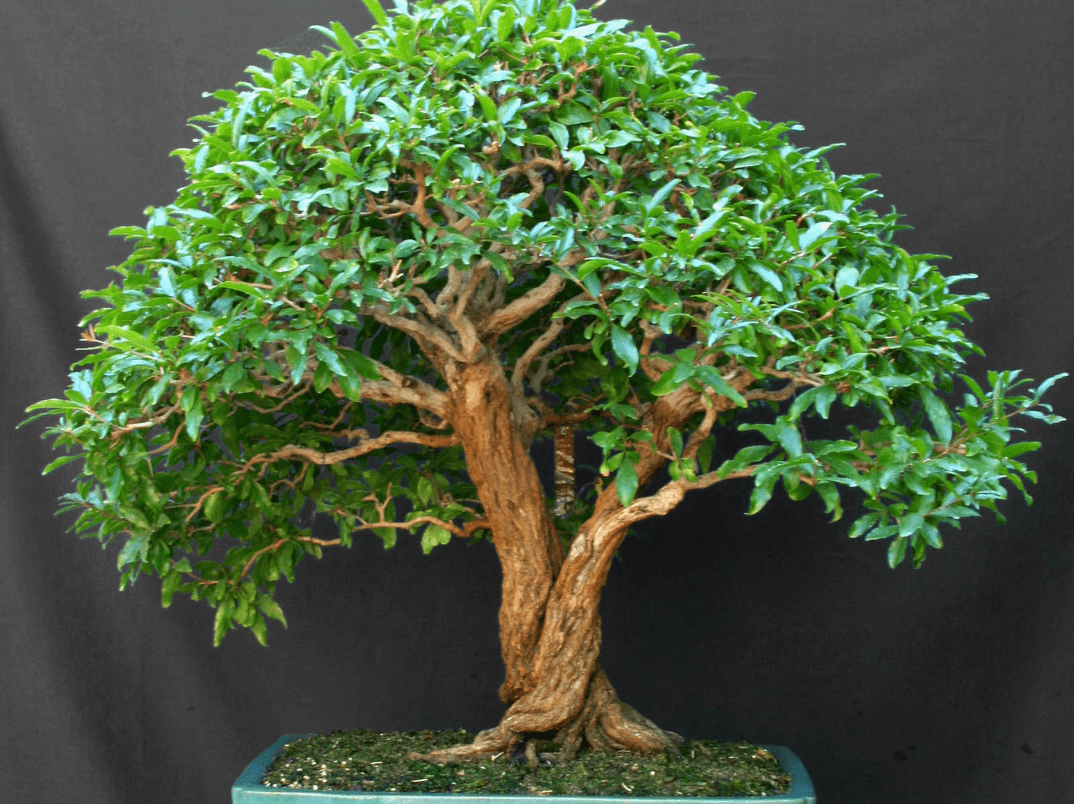
Serissa bonsai (or snowrose) has stunning, tiny white flowers that appear from spring through summer. This tree is very sensitive to changes in temperature and location – so is best suited to experienced bonsai carers. Its roots must be kept moist and it has to be kept between 10°C and 20°C in winter. The care is worth it (we promise): this tree is beautiful.
Bougainvillea Bonsai
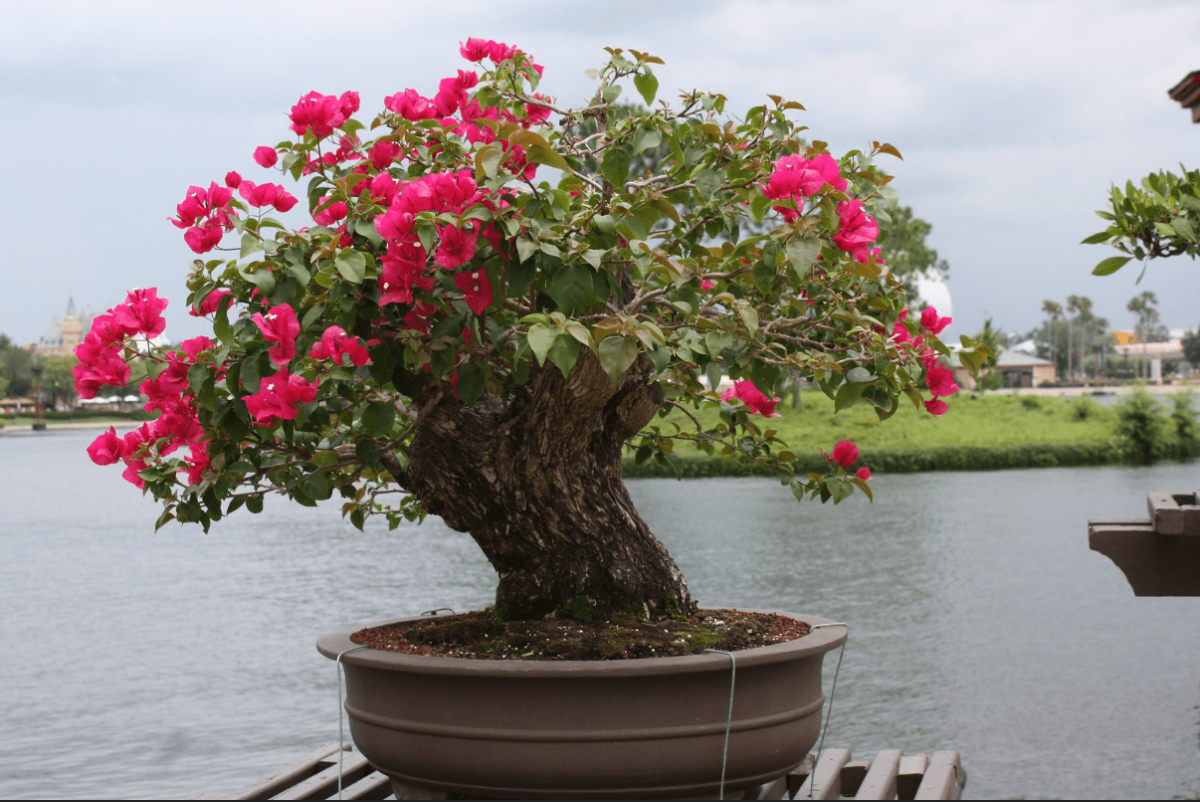
The bougainvillea’s clusters of 3 purple trumpet-shaped flowers make it a stunning sight. With enough light and heat between autumn and summer, these burst forward with real vibrancy. Since they’re subtropic (native to South America), keep away from frost and stick to temperatures around 10°C-15°C in winter. Without a doubt, one of the world’s best bonsai plants.
Ficus Bonsai
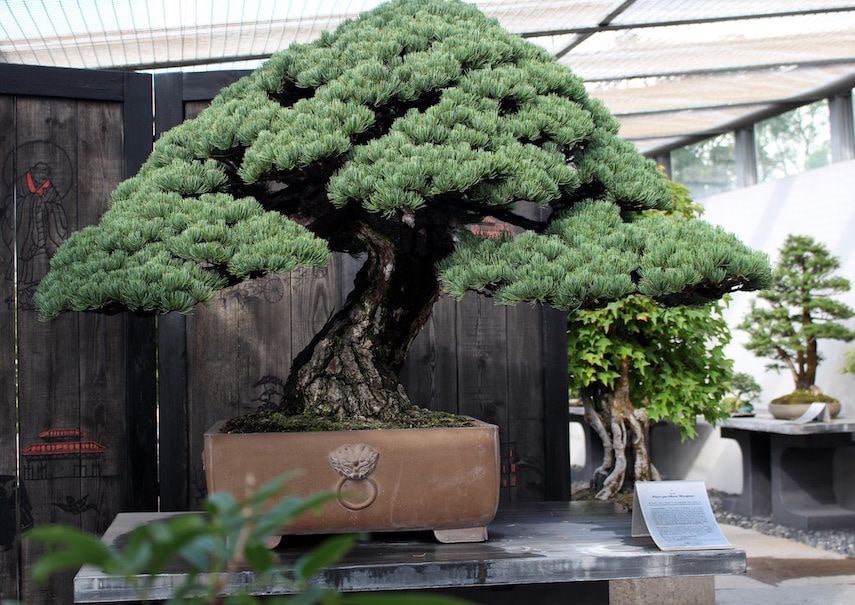
The ficus bonsai is the best indoor bonsai plant for bonsai beginners. They produce figs that can be red, yellow, green, or purple and vary in size. Its leaves are similar (growing between 1 and 20 inches!), with a pointed tip that drips rainwater down. Place inside with a good view of the sun, water generously, and prune back to 2 leaves after 6-8 leaves have grown. Fun fact, a Ficus Bonsai Tree (stored in the Italian Bonsai museum of Crespi) is the oldest bonsai tree in the world at over 1,000 years old!
Also see the Ficus Benghalensis (Banyan tree bonsai).
Azalea (Rhododendron) Bonsai
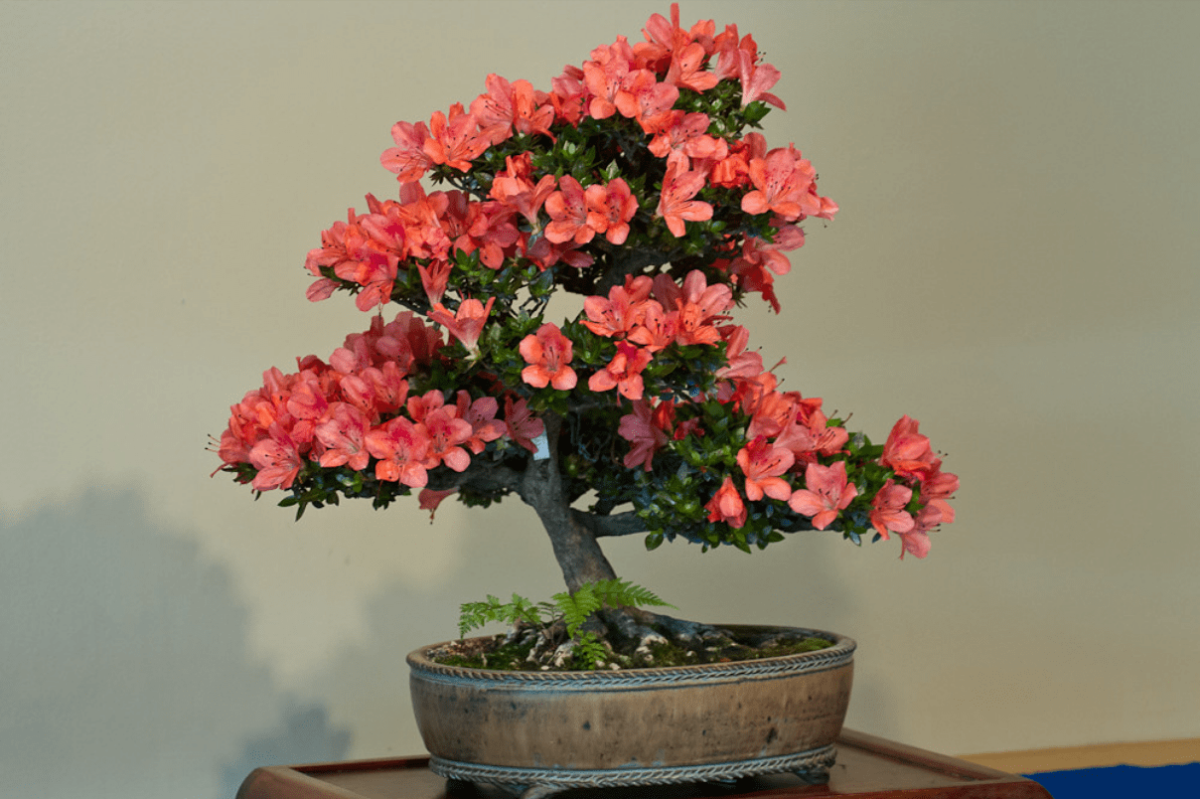
The Azalea’s amazing flowers open from May to June and hit you with the sweet fragrance of summer, appearing in different shapes, sizes, and patterns every year! Their dark green leaves are also incredibly vibrant and add to the aesthetic. Place your azalea outside (but in the shade during sweltering temperatures). Importantly, they need slightly acidic soil so don’t use pure tap water, filter it or mix it with rainwater instead. A gorgeous option, the azalea is regarded as one of the very best bonsai plants worldwide.
Cherry Blossom Bonsai
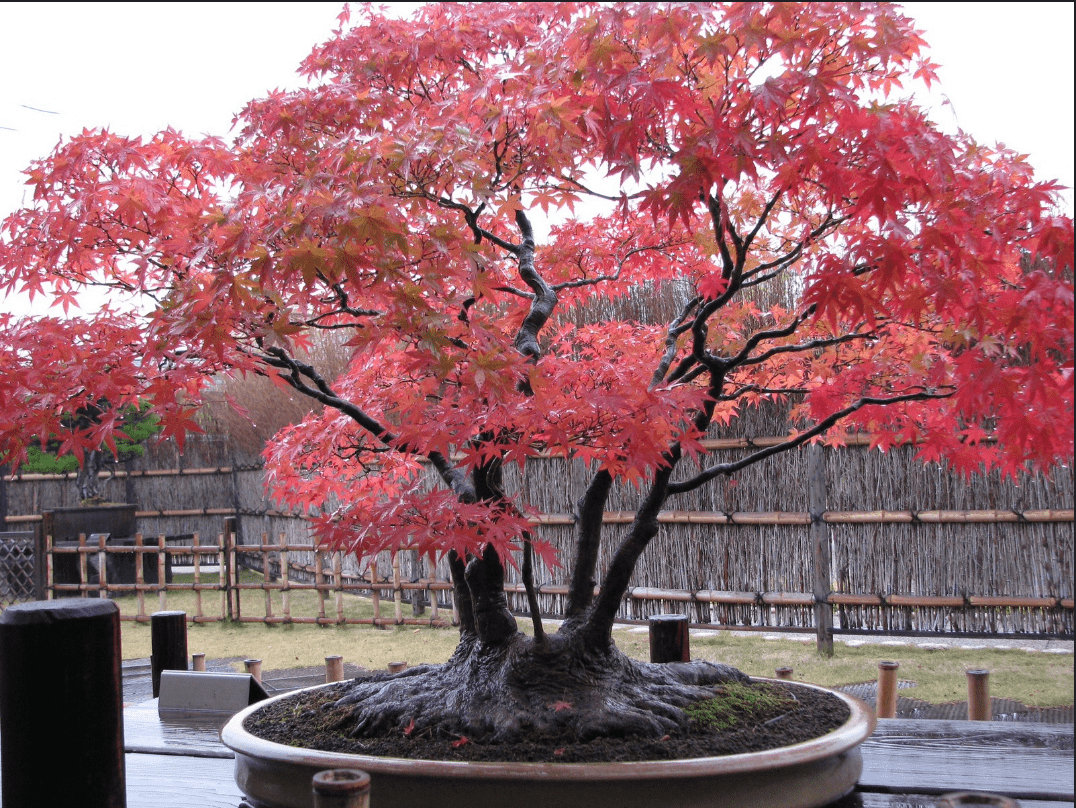
The Japanese are obsessed with watching cherry blossom (this is known as ‘sakara’). Unsurprisingly, Cherry Blossom Bonsai (啓応桜) are cherished in Japan. Its delicate flowers radiate peace in their pink, purple and white colours – swelling the heart. Keep in plenty of suns and out of the wind. Note that a cool period of 3 months in winter is needed to protect from frost, so act accordingly. These really are a beautiful sight!
For more info on how to spice up your garden Japanese-style, check out our article: The Kokedama: A Japanese Zen Garden in a Ball



































